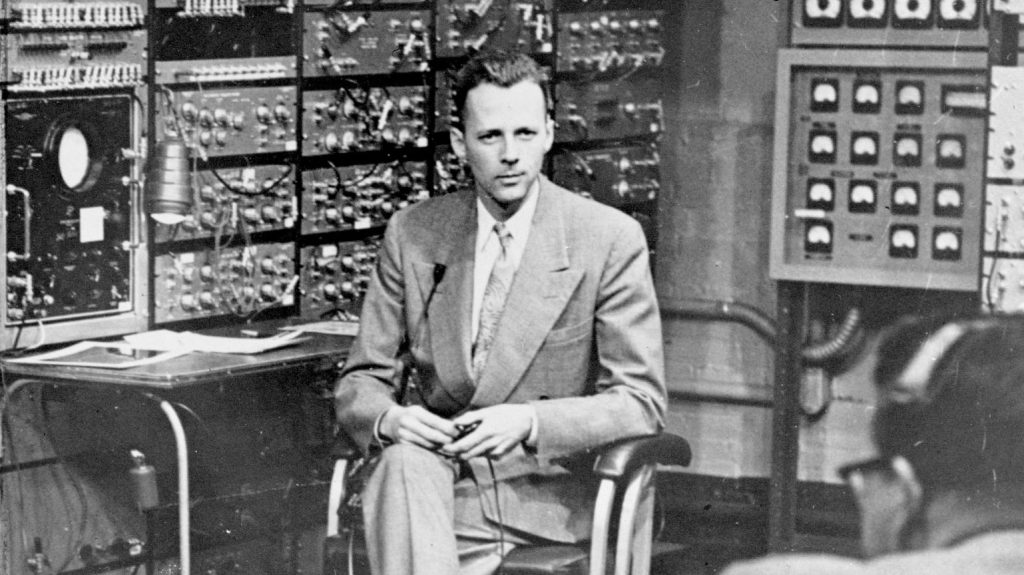Most people know Jay W. Forrester as the brilliant mind who founded System Dynamics. But his journey to becoming a top systems thinker was quite surprising. Forrester started out as a pioneering electrical engineer who helped design some of the world’s first big digital computers. It was his deep expertise in feedback control—the science of how machines manage themselves—that he later realized could be applied to the messy, complicated world of business, management, and society.
Forrester ultimately proved a major point: the stubborn problems we face, from cities that struggle to economies that constantly rise and fall, are not caused by bad luck or outside forces. They are caused by the internal structure and the policies we design within those systems. His work gave systems thinking the powerful computer tools it needed to truly model reality and find lasting solutions.
From Wires and Circuits to Business Cycles
Jay W. Forrester (1918–2016) spent the first part of his time at the Massachusetts Institute of Technology (MIT) making history in electrical engineering and computer science.
Project Whirlwind and Control Systems
During the 1940s and 1950s, Forrester led the incredible Project Whirlwind, which developed one of the very first high-speed digital computers. This project made him a world expert in control systems. A control system is what engineers use to make sure a machine or process stays on its target—think of how a computer-controlled rudder keeps a ship on course. This work taught him everything about precisely mapping inputs, delays, and outputs.
The Big Move
In 1956, Forrester made a crucial decision: he moved from the School of Engineering over to the MIT Sloan School of Management. He realized that the cycles and crises he saw in business—such as inventory going too high, then too low, or hiring booms followed by sudden layoffs—behaved exactly like the unstable electronic circuits he had studied. They were driven by circular cause-and-effect and the problem of delays. This insight was the spark that created the entire System Dynamics field.
The Birth of System Dynamics
In his new role, Forrester began to apply his engineering principles to management problems. His first major book laid out the entire framework for the new field.
Industrial Dynamics: Structure Causes Behavior
In his famous 1961 book, Industrial Dynamics, Forrester introduced the methodology that became SD. He argued that the instability in business wasn’t external; it was built right into the firm’s own structure—its information flows, decision-making rules, and policies.
- The SD Tools: Forrester established the core building blocks of SD: Stocks (the accumulations, like inventory), Flows (the rates of change, like production), and Feedback Loops (the engine that drives the system).
- Finding the Cause: He showed that a business’s problem was caused by delayed and distorted information moving through its internal structure, leading managers to make decisions that were technically correct but poorly timed for the system.
The Problem of Counter-intuitive Behavior
One of Forrester’s most important discoveries was that complex systems are counter-intuitive. What does that mean? It means the logical, common-sense action taken to fix a problem often ends up making the problem much worse over time. The only place where a small, smart change can create a large, positive result (the leverage point) is usually far away from where the problem is actually being felt. Only by modeling the whole system could the true solution be found.
Modeling the Real World
After proving that System Dynamics worked for single companies, Forrester and his team began applying their models to much larger social challenges, showing that the methodology was truly universal.
Urban and World Dynamics
In the late 1960s and early 1970s, Forrester published Urban Dynamics and World Dynamics. These books used his models to study complex social structures.
- Urban Dynamics: This work showed that many expensive, well-meaning policies intended to help cities (like building more low-cost housing) actually had the unintended effect of increasing the concentration of poverty in the long term because of the system’s structure.
- World Dynamics: This book was the scientific base for the famous Limits to Growth study (written by his students, Donella and Dennis Meadows). The study used SD models to warn the world about the severe consequences of continued, unchecked exponential economic growth running into the limits of finite planetary resources.
Forrester proved that System Dynamics was not just a powerful tool for managers, but a necessary method for all policy-makers dealing with highly interconnected, global systems.
Conclusion
Jay W. Forrester is recognized as the crucial thinker who built the bridge between the theory of General Systems Theory (GST) and the practice of systems modeling. By successfully translating the engineering concepts of feedback and delay into a powerful tool for social and economic analysis, he created System Dynamics. His work fundamentally changed how people view complexity, forcing everyone—from CEOs to city planners—to look past surface events and focus instead on the structural design that actually creates a system’s behavior.


